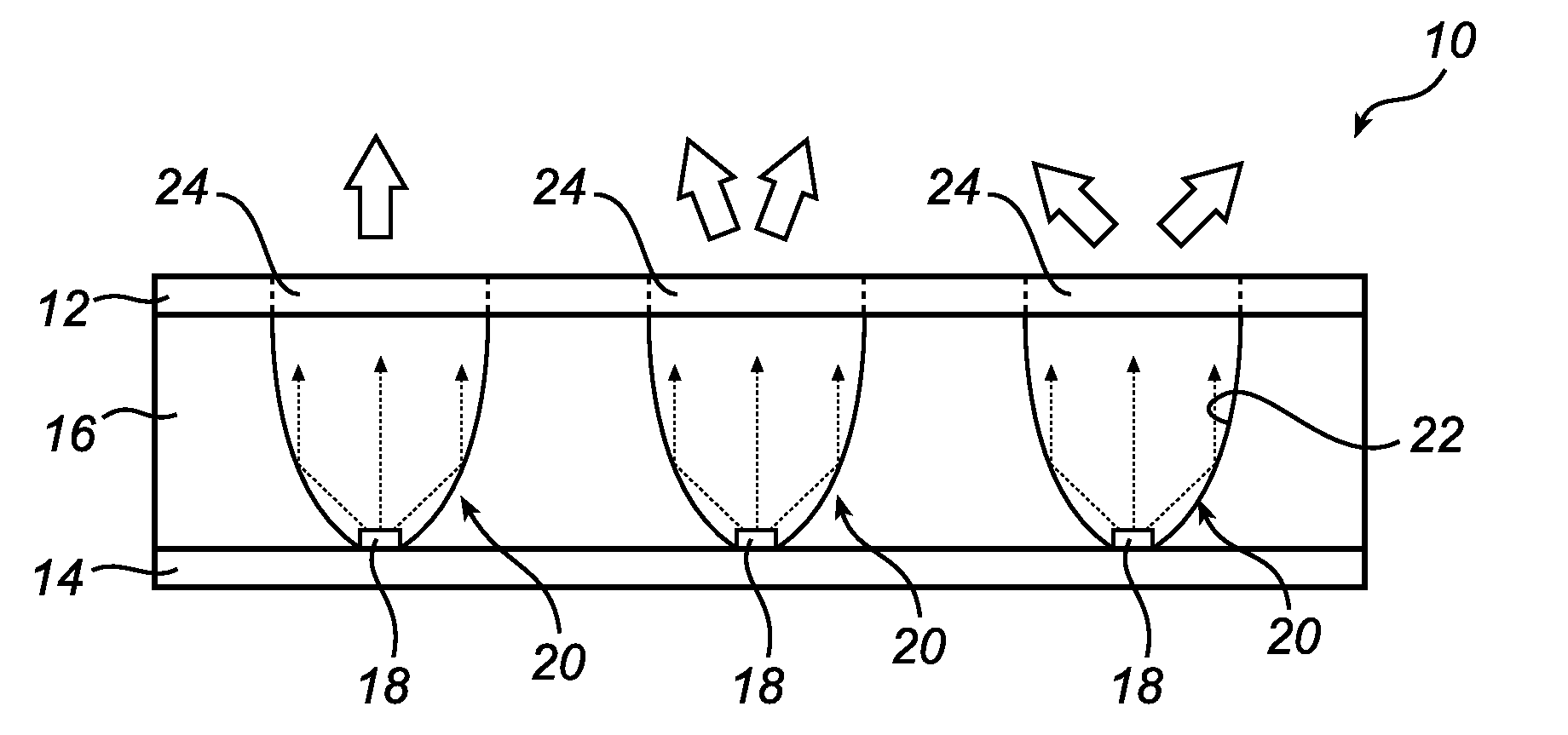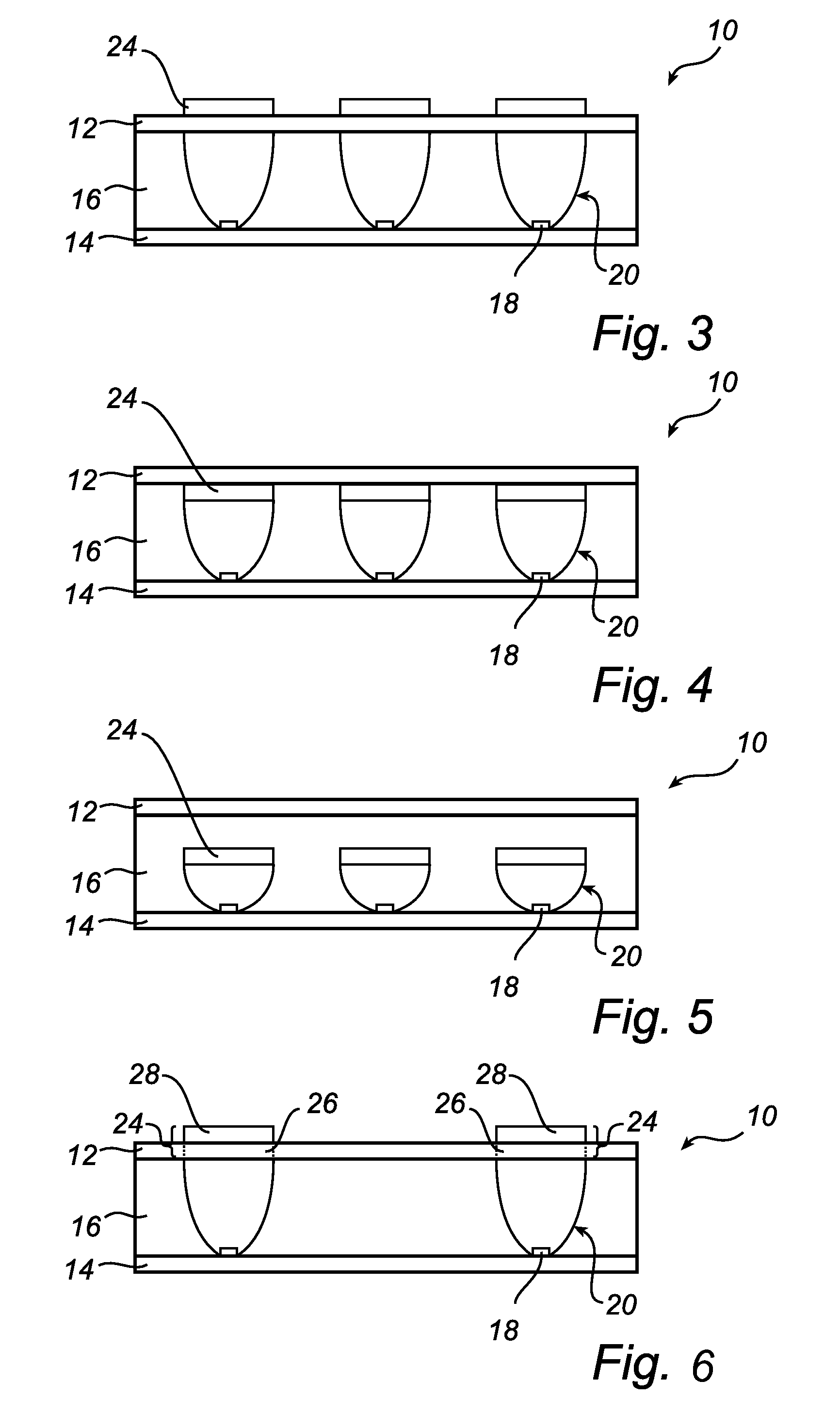Light output device and control method
a technology of light output device and control method, which is applied in the direction of lighting and heating apparatus, semiconductor devices for light sources, instruments, etc., can solve the problems of limiting the versatility and applicability of light output devi
- Summary
- Abstract
- Description
- Claims
- Application Information
AI Technical Summary
Benefits of technology
Problems solved by technology
Method used
Image
Examples
Embodiment Construction
[0020]FIG. 1 is a schematic, cross-sectional side view of a light output device 10 according to an embodiment of the present invention.
[0021]The light output device 10 comprises a top glass plate (cover plate) 12 and a bottom glass plate 14. The glass could be transparent or translucent. Between the glass plates 12, 14, an intermediate layer 16 is provided, for instance polyvinylbutyral (PVB). During manufacturing, the two glass plates 12, 14 are bonded with the PVB layer 16 under heat and pressure to create a single laminated glass structure.
[0022]In the intermediate layer 16, a plurality of LED units 18 adapted to emit light are arranged side by side at the bottom glass plate. In order to power and control the LED units 18, suitable electrical connections are provided (not shown). Each LED unit 18 may comprise a single LED (e.g. white or monochromatic) or several LEDs (e.g. one red, one green, and one blue LED, or red-green-blue-amber). The latter creates a mixed light. Also, the ...
PUM
| Property | Measurement | Unit |
|---|---|---|
| voltages | aaaaa | aaaaa |
| size | aaaaa | aaaaa |
| size | aaaaa | aaaaa |
Abstract
Description
Claims
Application Information
 Login to View More
Login to View More - R&D
- Intellectual Property
- Life Sciences
- Materials
- Tech Scout
- Unparalleled Data Quality
- Higher Quality Content
- 60% Fewer Hallucinations
Browse by: Latest US Patents, China's latest patents, Technical Efficacy Thesaurus, Application Domain, Technology Topic, Popular Technical Reports.
© 2025 PatSnap. All rights reserved.Legal|Privacy policy|Modern Slavery Act Transparency Statement|Sitemap|About US| Contact US: help@patsnap.com



